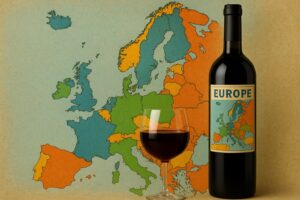Genetically modified animals used to create nutrititive substances or even more sophisticated pharmaceuticals? The techniques to reach these goals (as demonstrated by American scientists who have created a GMO pig that produces meat rich in substances beneficial to the heart) are the result of years of research worldwide, studies which have also often been the center of serious ethical questions. The latest of these tests was announced recently in the magazine Nature Biotechnology by researchers from the University of Pittsburgh who have obtained a cloned GMO mouse who has the capacity to produce Omega 3 fatty acids (a substance that helps protect the heart) that had inserted into its DNA. In 2003, with this same molecular biology, nine cloned calves in New Zealand were modified to produce milk with higher concentrations of casein as adults. In 2002, the announcement arrived from Taiwan of the first three pigs cloned from the ear cell of a pig with very particular characteristics: their milk contained an anti-hemophiliac factor and a substance capable of limiting diarrhea in the young pigs. But even earlier, in 1999, two famous sheep, Polly and Molly, were cloned with the capacity to produce milk that helped combat hemophilia. And among the animals whose genetic patrimony (DNA) has been modified with human genes, there are the cows, Rosie, whose milk was enriched with a dietary integrator, and Mr. Jefferson, the transgender bull who was modified to produce milk like its female counterparts. There are also the lambs, Cupid and Diana, who carry a human gene that could possibly be helpful for organ transplants. In fact, the milk from sheep and cows is considered a potentially inexhaustible means of producing pharmaceuticals that are today rare or costly. In 1997 Polly and Molly produced milk with the factor IX for coagulation to combat hemophilia B. In 1994 cow’s milk with human antibodies immunoglobulin A appeared, which allows for the increased capacity to combat infections. In 1996, there was low fat milk, and in 1995 there was goat’s milk with human albumin in it. Sheep were the first candidates to produce milk on a large scale with the apha-1- antitrypsin protein (AAT) in it, resulting in a new weapon to combat cystic fibrosis. As can be seen, the array of animals that have been genetically modified has grown over recent years. Giuseppe Novelli of the University of Rome Tor Vergata explained, ”That which one can not do efficiently with the production of biotech pharmaceuticals through the cultivation of cells in test tube is tempting to do it with animals, living factories that can produce human proteins, hormones, and antibodies”. These substances are obtained by inserting human genes into the genetic makeup (DNA) of the animal. The animal is then cloned (usually with embryonic cells, not adult cells as was the case with the sheep Dolly) in order to obtain perfectly identical organisms. The first transgenic animal to be created was the “Oncomouse”, a mouse that had been transformed by a laboratory in 1988 in order to study cancer. It was also the first living being to be patented. Since then mice without immune systems, those super-resistant to viruses, and those with Alzheimer’s have all been created. On the “biotech farm” there is a new push to develop pigs modified to make their organs compatible with those of humans as a potentially infinite source of transplant material. This research is particularly advanced in Italy.
Source: ANSA - Francesco Marabotto
Copyright © 2000/2025
Contatti: info@winenews.it
Seguici anche su Twitter: @WineNewsIt
Seguici anche su Facebook: @winenewsit
Questo articolo è tratto dall'archivio di WineNews - Tutti i diritti riservati - Copyright © 2000/2025








































































































































































































